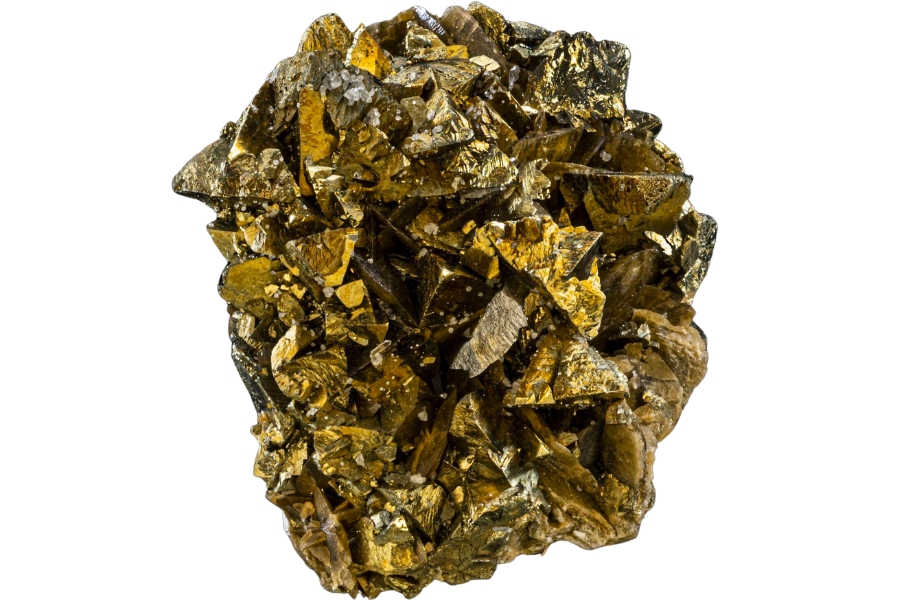Finding crystals can be a rewarding adventure, offering a unique way to explore the natural beauty and geology of the region. Whether you’re a seasoned rockhound or just getting started, knowing where to look is key to uncovering these hidden treasures.
In this state, a variety of locations provide opportunities to discover different types of crystals. From rocky outcrops in the mountains to stream beds that carry sparkling surprises, each area offers its own unique finds for those willing to search.
We can help you get started with some places you can explore for crystals below!
Crystals you can find in the US
The United States offers a wide range of crystals that reflect its diverse geology. From vibrant gems to more subtle mineral formations, there’s something to discover in nearly every region.
Calcite
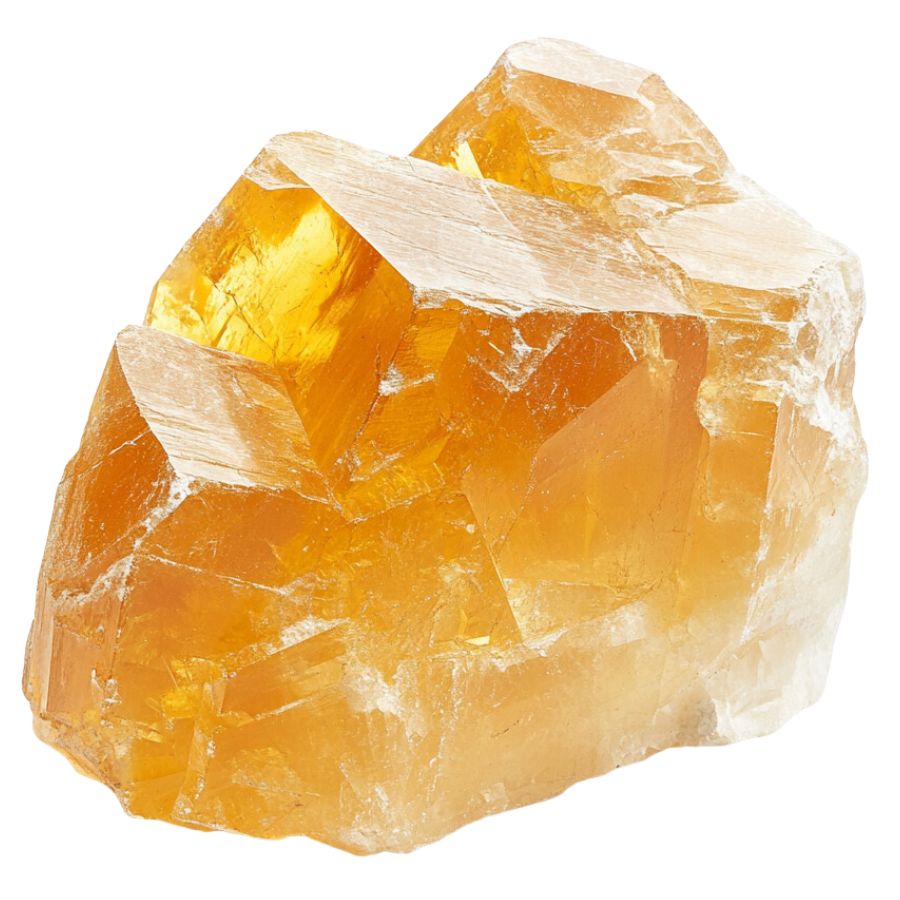
With a variety of forms and a unique property of double refraction, calcite allows objects viewed through the crystal to appear doubled. This mineral can appear in a spectrum of colors, with pure forms typically being transparent or white.
In addition, calcite reacts vigorously with acids, which aids in distinguishing it from other minerals. It also frequently contributes to the structure of sedimentary rocks such as limestone.
Gypsum
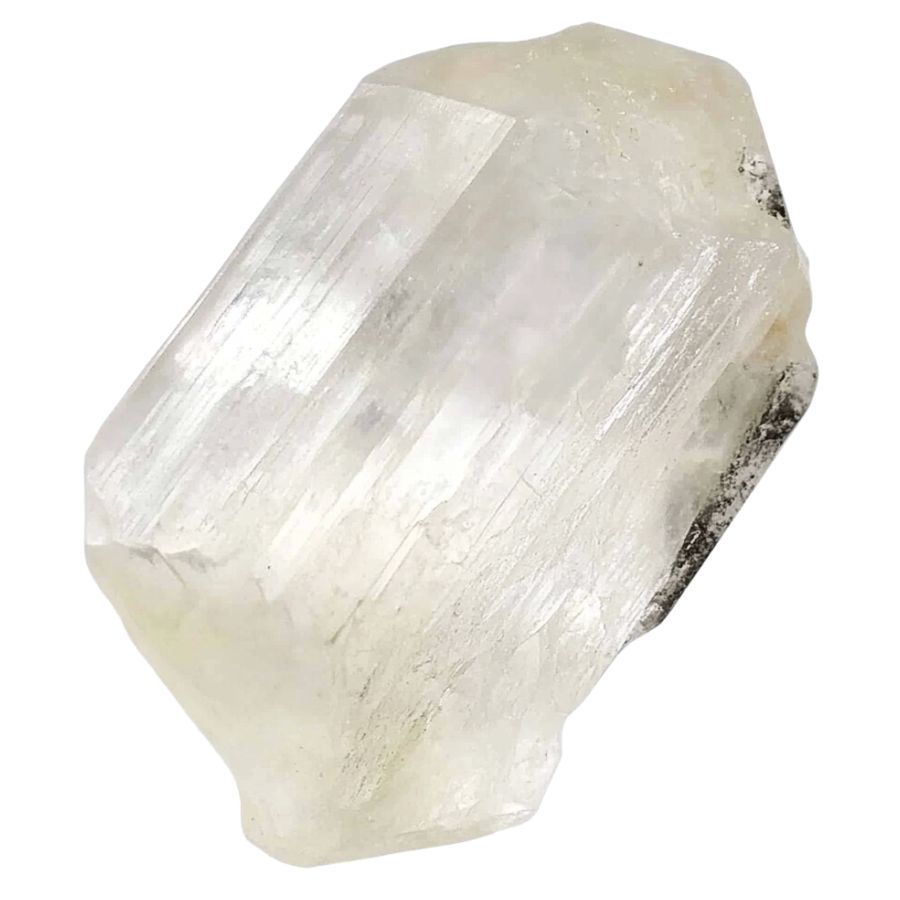
Gypsum’s notable softness allows it to be easily scratched with just a fingernail, often presenting as white or very light-colored in its pure form.
It manifests in both crystalline forms, like selenite, and massive forms such as alabaster, making it versatile in use and appearance.
Gypsum is also essential in the construction industry and is a key component in the manufacture of plaster and drywall.
Fluorite
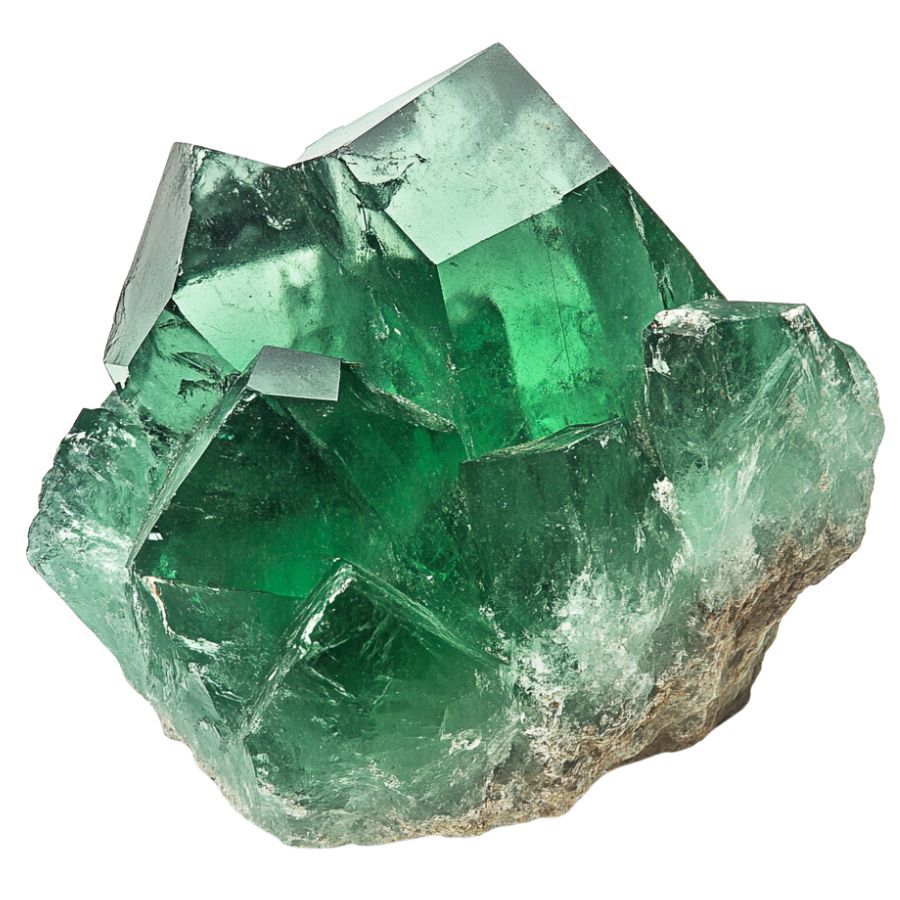
Fluorite comes in a wide range of vibrant colors, including purples, greens, blues, and yellows, and is known for forming in well-defined cubic crystals.
Beyond this, fluorite exhibits fluorescence under ultraviolet light! It can also be used in various industrial applications, including as a flux in steelmaking.
Galena
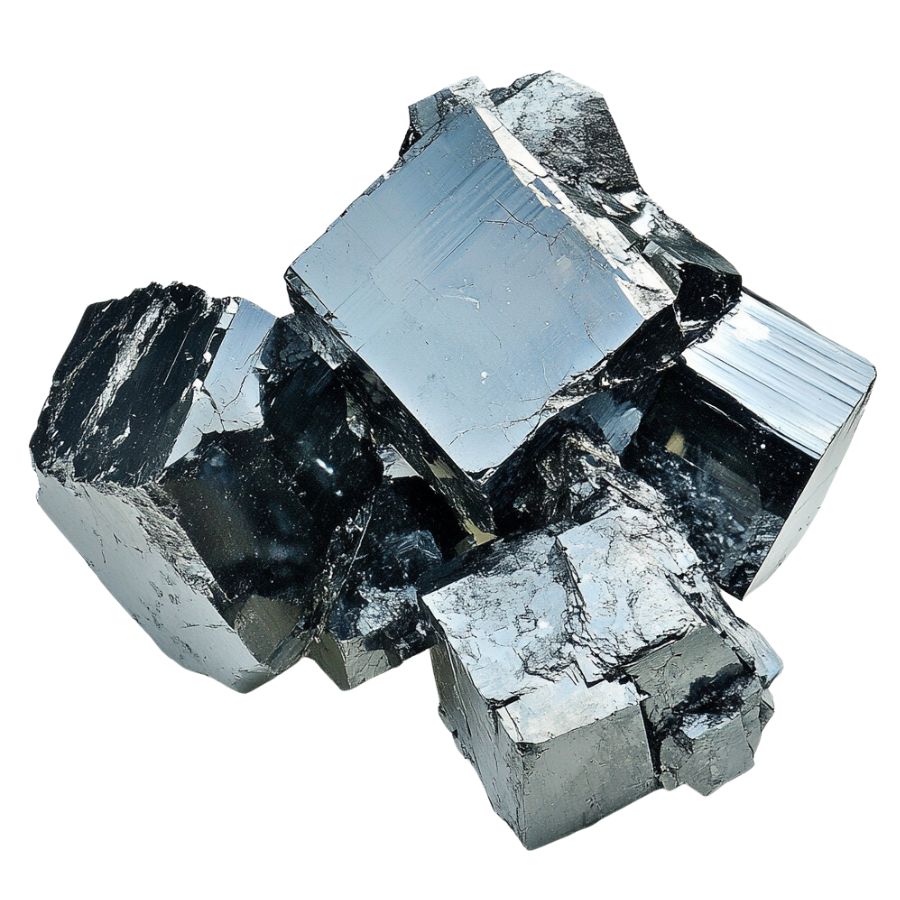
Galena distinguishes itself with a metallic luster and high density, typically found in a cube-like form. It serves as the primary ore of lead, making it important in the metal industry, while its shiny, silver color attracts collectors.
Not only does its appearance make it a subject of interest, but its weight and texture provide tangible lessons in mineral density and metallic properties. Galena also often contains traces of silver, adding to its commercial and educational value.
Corundum
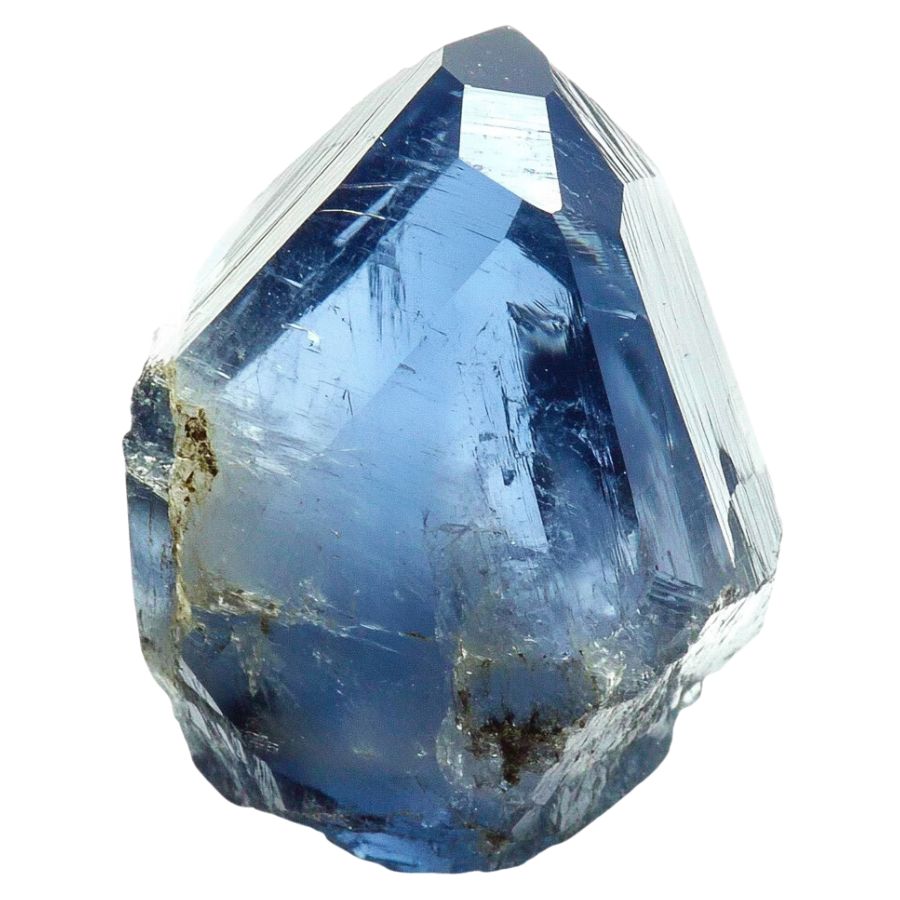
Corundum is a mineral that comes in a variety of colors, though it is typically transparent or gray. Its most famous forms are sapphires and rubies, which are prized for their vibrant blue and red hues.
The mineral is known for its remarkable hardness, ranking just below diamond on the Mohs scale. This durability makes corundum ideal for industrial abrasives and cutting tools, as well as a popular choice for fine jewelry.
Quartz
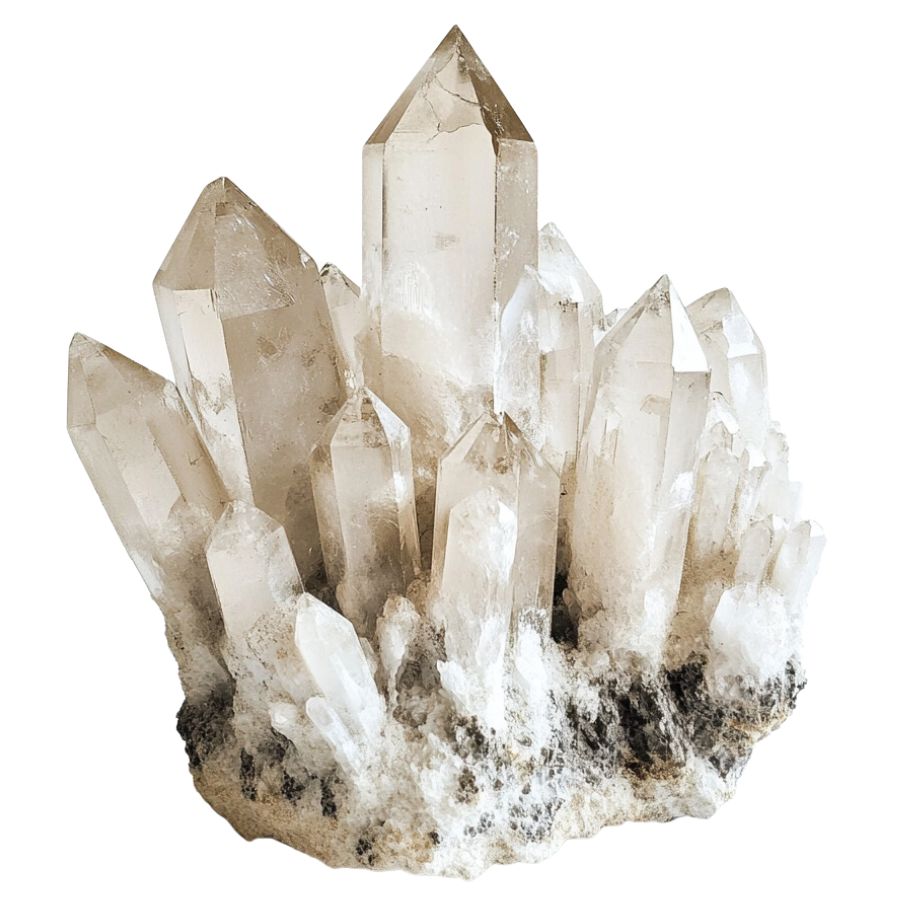
Quartz is among the most common minerals in the Earth’s crust and is prized for its durability and variety. It forms in a wide range of colors and types, from clear rock crystal to purple amethyst.
The mineral is notable for its hardness and durability, which contribute to its use in a variety of applications. Quartz is also popular in the manufacturing of electronics and watches due to its piezoelectric properties, which allow it to convert mechanical pressure into electrical energy.
Pyrite
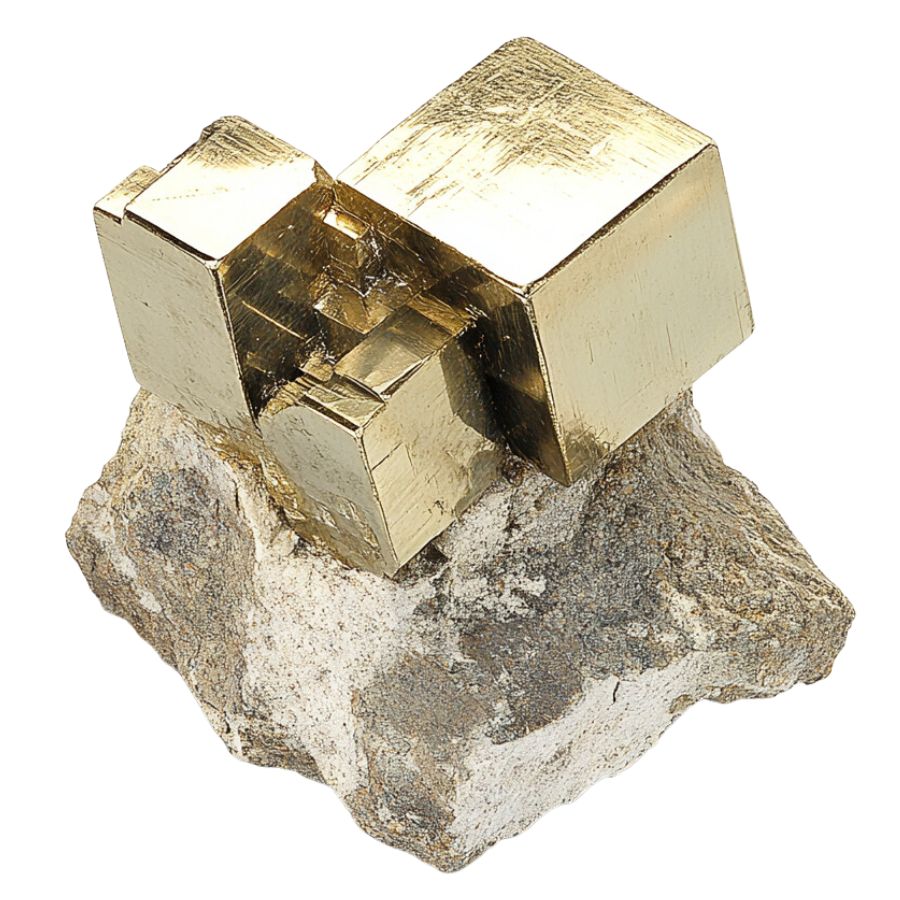
Often mistaken for gold due to its metallic luster and pale brass-yellow hue, pyrite is known colloquially as “fool’s gold.” Its characteristic cube-shaped crystal formations look man-made but are actually completely naturally formed!
Pyrite also has historical importance in producing sulfur dioxide for sulfuric acid production.
Rhodochrosite
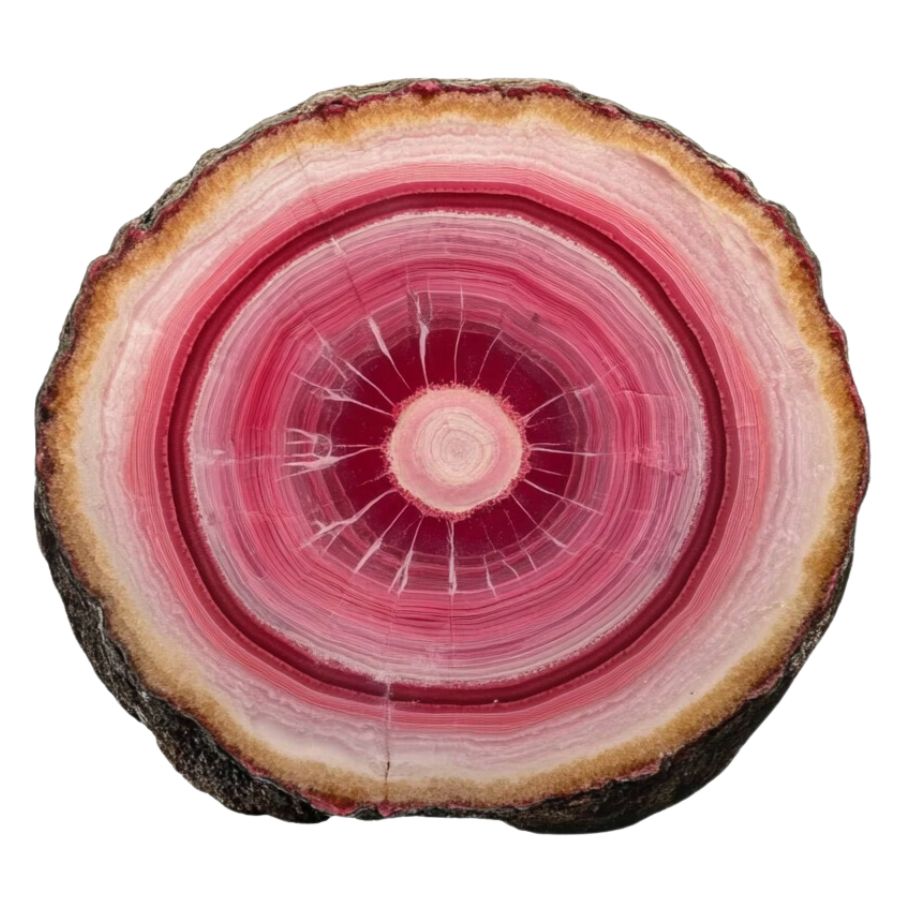
Rhodochrosite stands out with its rich pink and red hues, making it highly desirable as both a mineral specimen and a gemstone.
It typically forms in layered or stalactitic structures, with bands of colors that showcase how it grew over millions of years.
Beyond its beauty, rhodochrosite is significant as the main source of manganese, an essential element used in metal alloys.
Rhodonite
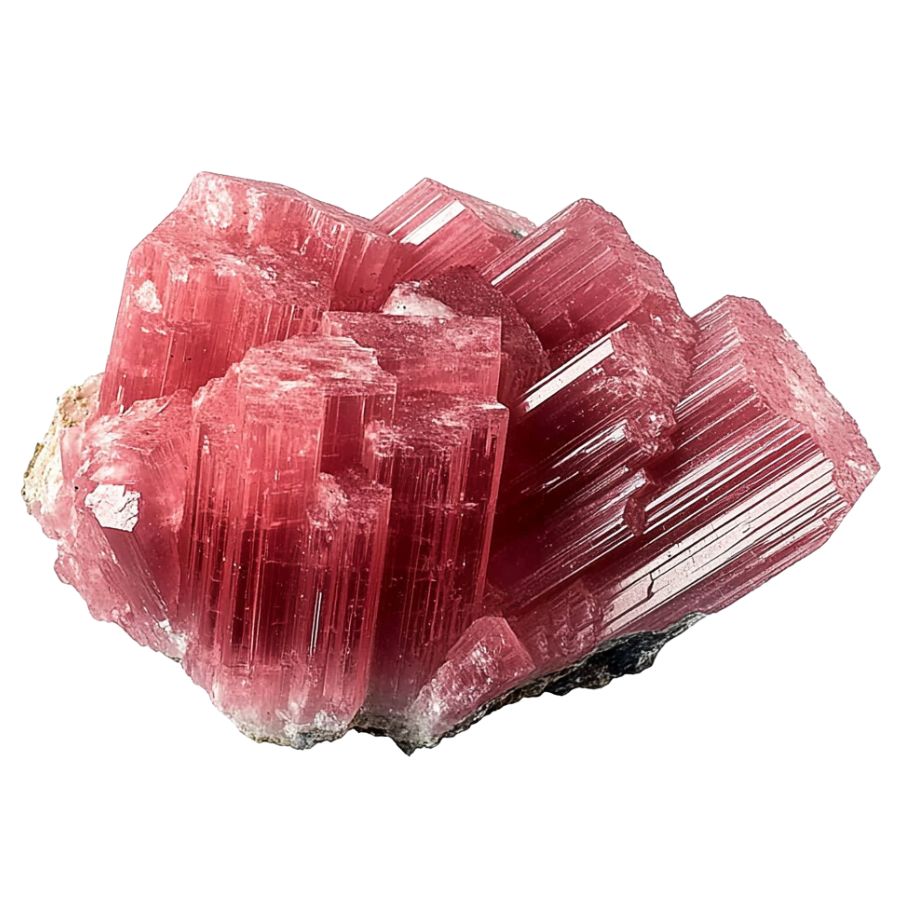
Appreciated for its deep pinks and reds, often complemented by black manganese oxide veins, rhodonite presents a dramatic appearance. It is typically found in metamorphic rocks and is used both as an ornamental stone and in jewelry.
In geology, rhodonite is significant for its role in metamorphic processes and its association with other manganese-rich minerals. It can be found in metamorphosed sedimentary rocks and is sometimes used as an indicator of the presence of manganese deposits.
Vivianite
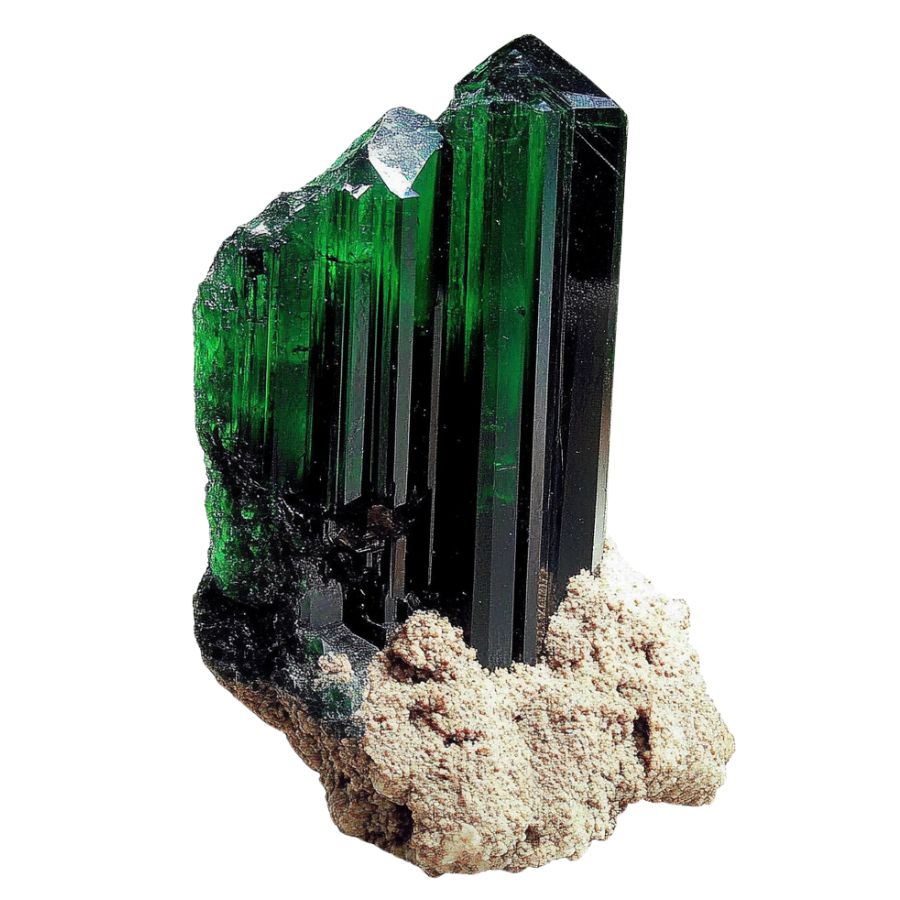
Vivianite, an iron phosphate mineral, emerges in low-oxygen environments like peat bogs or iron-rich deposits. Its striking blue to green color, which can change to a lighter shade over time due to oxidation, makes it a distinctive mineral.
Found in various geological settings, vivianite provides clues about the local conditions and the presence of phosphate deposits.
The Types of Crystals We Found
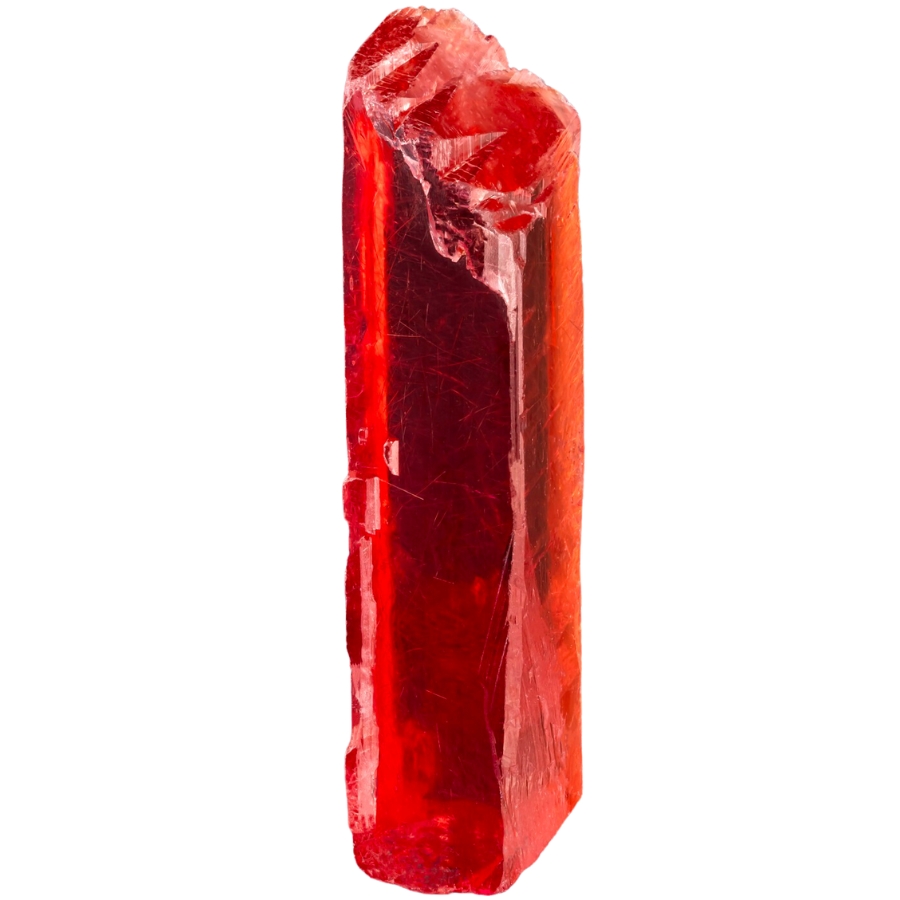
Rockhounding in our state will prove to you that it lives up to its name as the Gem State. It offers a wealth of both rare and common crystals to hide within its vast expanse:
Rare crystals found in Idaho
- Aquamarine
- Azurite
- Beryl
- Chrysocolla
- Diamond
- Epidote
- Galena
- Kyanite
- Malachite
- Muscovite
- Onyx
- Rhodonite
- Ruby
- Topaz
- Tourmaline
More common crystals found here
- Agate
- Chalcedony
- Chalcopyrite
- Garnet
- Jasper
- Opal
- Pyrite
- Quartz
- Sapphire
- Thunderegg
What rough crystals look like
When you’re out looking for crystals on your own it’s important to know what you’re looking for. This is what you need to look out for:
Look for exteriors like this
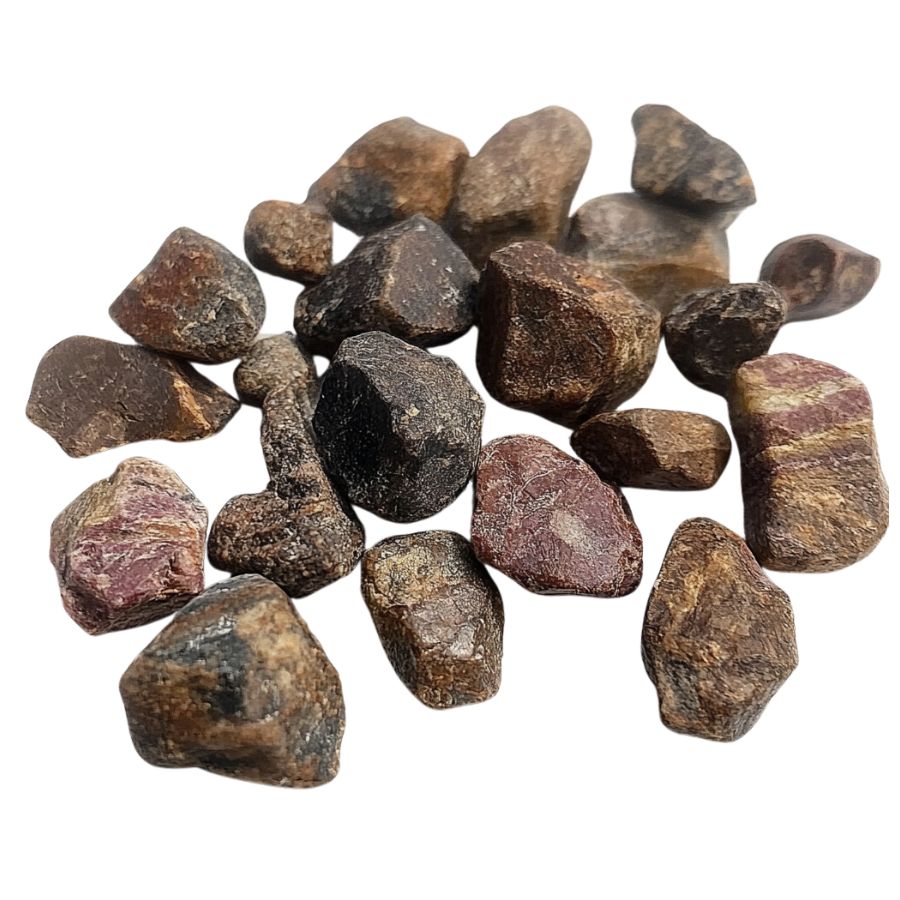
When you’re out searching for crystals in the wild, it’s essential to keep in mind that what you find won’t look like the polished stones you see in stores. One important tip is to consider what certain crystals look like in their raw, natural form.
Without the shine and smooth finish, crystals might appear rough, with jagged edges or earthy tones masking their true beauty. Understanding this can help you spot potential finds that might otherwise be overlooked.
Examine the crystal structure and shape
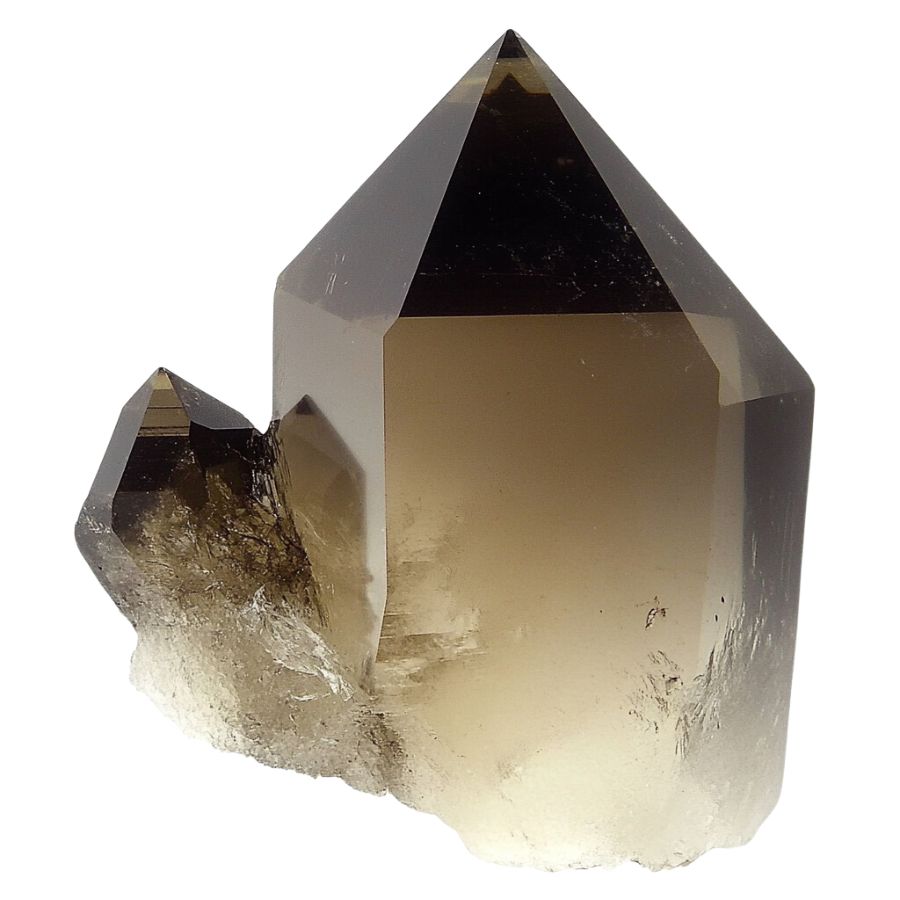
Crystals often form in specific geometric patterns that can be key to identifying them. For example, quartz is known for its hexagonal prisms, while halite typically forms cubic shapes.
By recognizing these distinct patterns, you can differentiate between various types of crystals and better understand what you’ve found.
Observe color
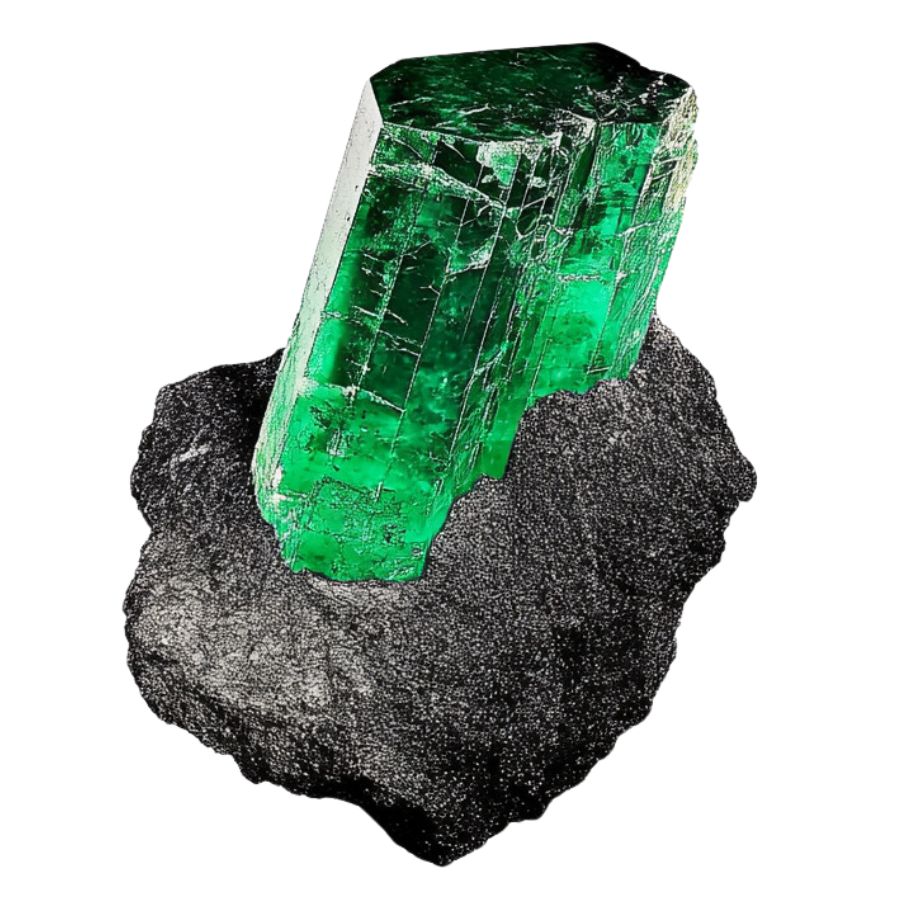
Some crystals are known for their distinct hues, like the deep purple of amethyst or the vibrant green of emerald. However, not all crystals will have strong colors; some may be clear or only slightly tinted.
Check the luster
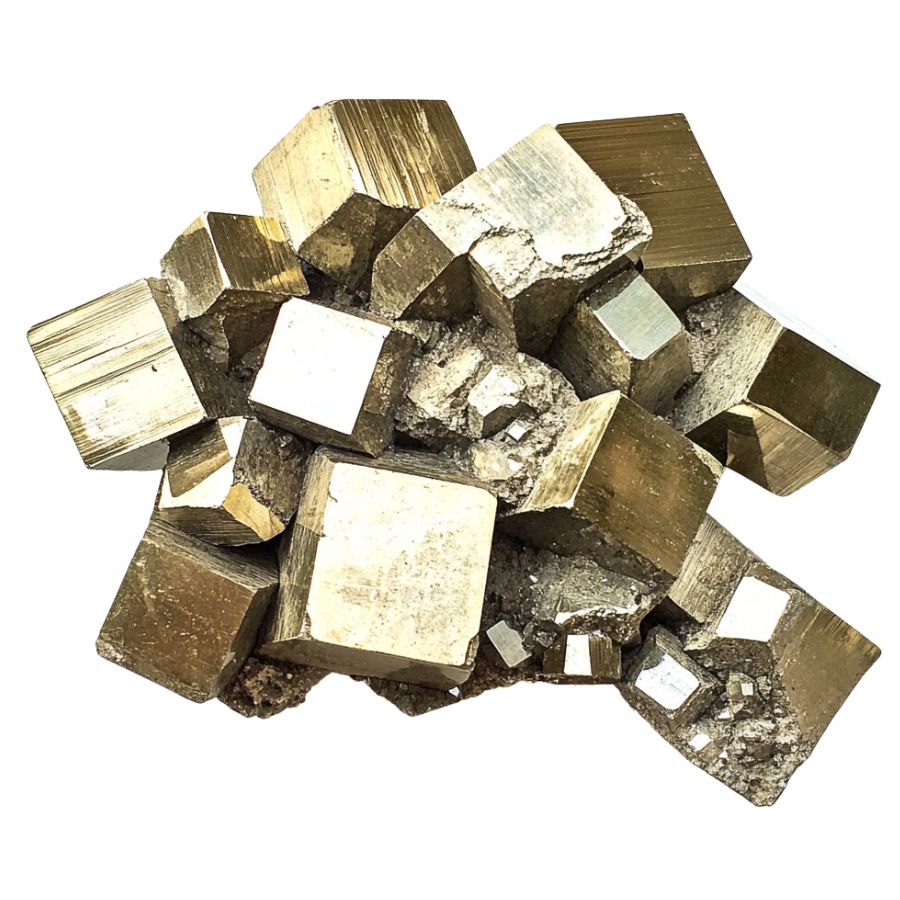
Luster refers to how a crystal’s surface interacts with light. Some crystals might have a shiny, glassy luster, while others may appear metallic or dull. This characteristic can help you determine the type of crystal you’ve found.
However, it’s important to remember that luster isn’t always obvious right away. In some cases, a crystal’s true luster will only become apparent after it’s been cleaned or polished, so keep this in mind as you examine your finds.
Evaluate the transparency
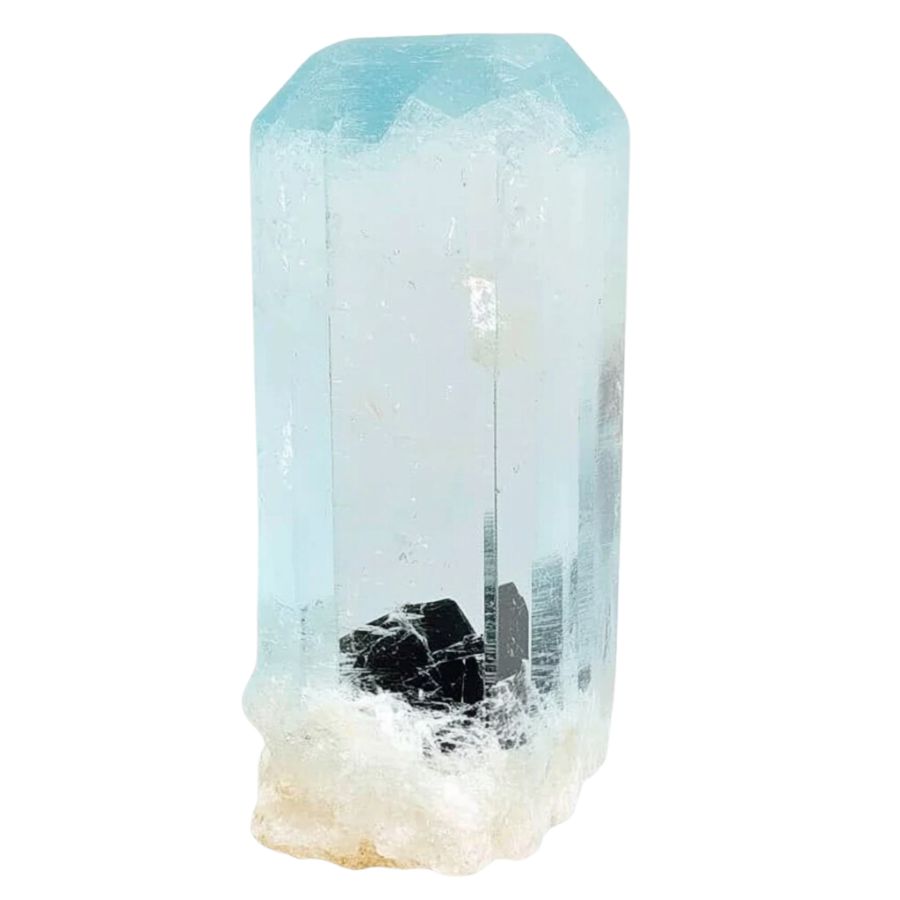
Pay close attention to how much light passes through the crystal. Some crystals are completely clear, allowing light to pass through easily, while others may be opaque and block light entirely.
You might also encounter crystals with translucent edges but opaque centers. These variations in transparency can offer valuable clues about the type of crystal you’ve found, making it easier to identify and appreciate your discovery.
A Quick Request About Collecting
Always Confirm Access and Collection Rules!
Before heading out to any of the locations on our list you need to confirm access requirements and collection rules for both public and private locations directly with the location. We haven’t personally verified every location and the access requirements and collection rules often change without notice.
Many of the locations we mention will not allow collecting but are still great places for those who love to find beautiful rocks and minerals in the wild without keeping them. We also can’t guarantee you will find anything in these locations since they are constantly changing.
Always get updated information directly from the source ahead of time to ensure responsible rockhounding. If you want even more current options it’s always a good idea to contact local rock and mineral clubs and groups
Tips on where to look
Having a better idea of where to look can greatly narrow down your search and increase your chances of finding crystals. By focusing on environments where crystals are likely to be exposed, you can spend less time searching and more time discovering.
Outcrops and Exposed Rock
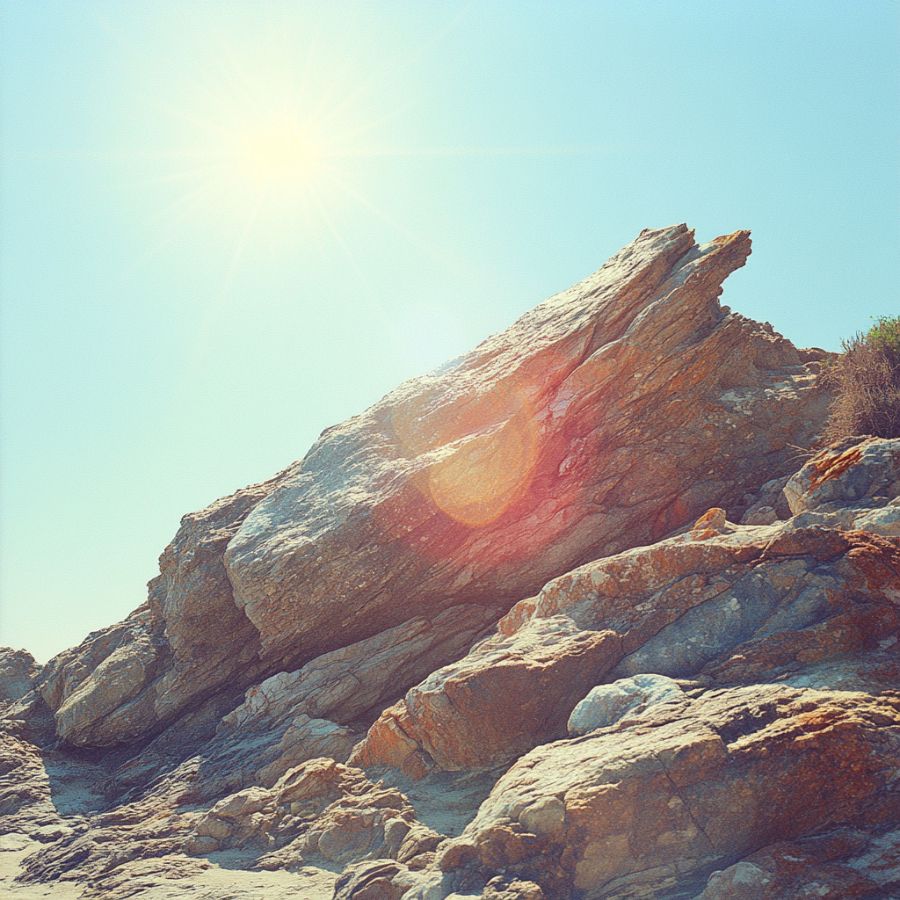
Rocky outcrops are prime locations for finding crystals and minerals. Search along the edges of outcrops, particularly where erosion has worn away the surrounding soil, revealing the rock underneath.
Pay close attention to any visible cracks, crevices, or small cavities within the outcrop, as these are often where crystals develop and can be extracted with minimal effort.
Stream Beds and Gravel Deposits
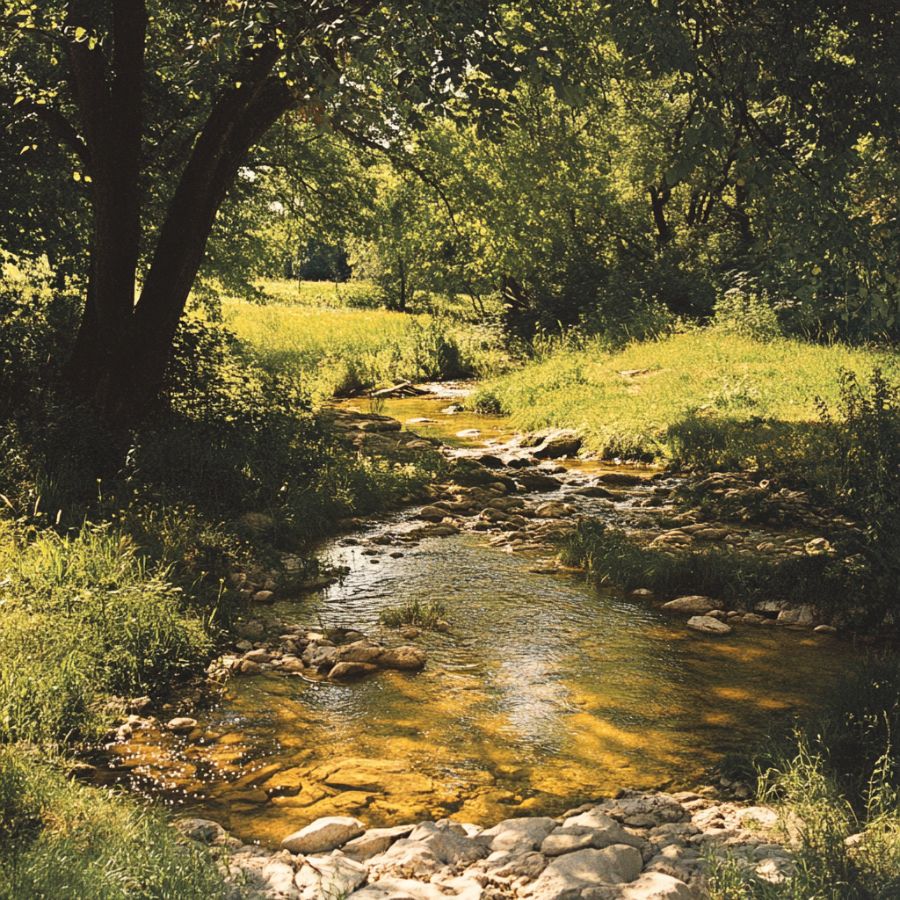
Stream beds are dynamic environments where water flow constantly shapes the landscape. Over time, water can erode rocks upstream, breaking them down and carrying mineral fragments, including crystals, downstream.
When searching in these areas, look for spots where the current has slowed, such as bends in the stream or areas behind large rocks, as these are prime locations for deposits.
Quarries and Mines
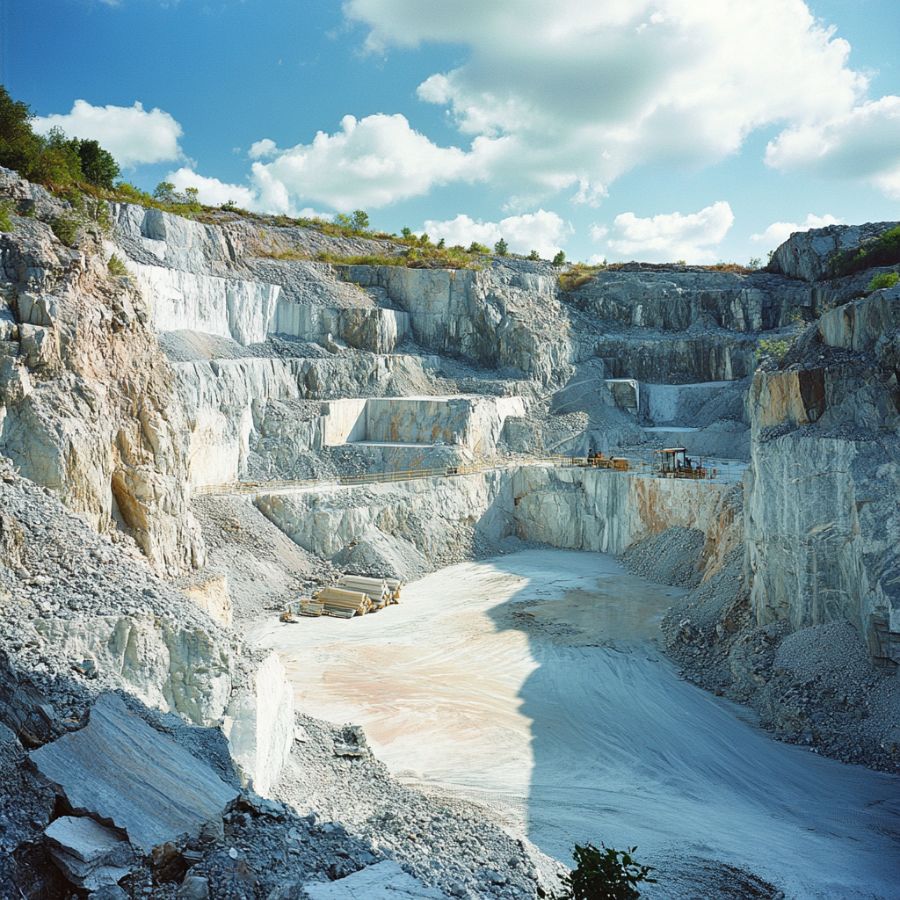
Quarries and mines are excellent places to search for crystals because they expose deep layers of rock that would otherwise be hidden beneath the surface. These sites often contain a variety of minerals and crystals that have been brought to the surface during excavation.
Pay attention to tailings piles, where waste rock is discarded, as they often contain overlooked or broken crystals. Always prioritize safety when exploring these areas and ensure that you have permission to search.
Road Cuts and Construction Sites
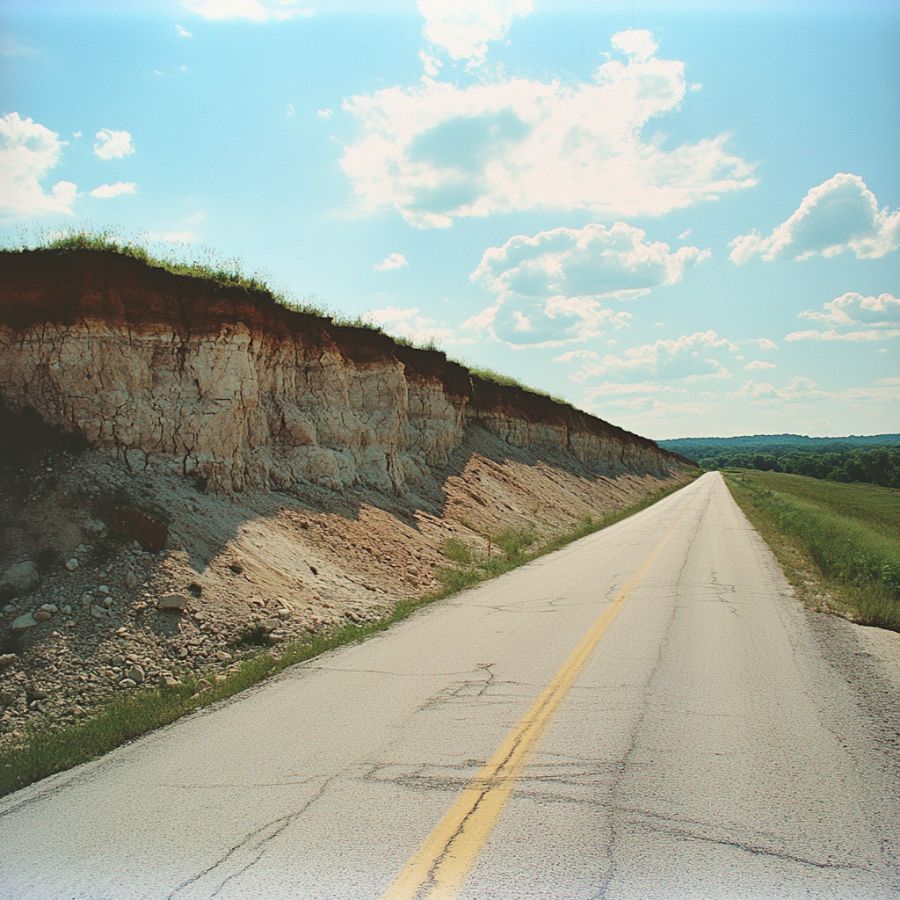
As roads are cut through hillsides or construction projects dig deep foundations, layers of rock and soil that have been undisturbed for millions of years are suddenly exposed.
Look for freshly exposed rock faces, especially where blasting has occurred, as this can create fissures or expose pockets filled with crystals. Be cautious around active construction sites, and always seek permission before exploring.
Mountainous Areas

In mountainous regions, erosion caused by wind, rain, and ice can wear away the softer rock, exposing harder crystals that have formed within. Focus on weathered and broken rock formations.
Look for scree slopes, where loose rock has accumulated at the base of cliffs. Additionally, areas near fault lines or volcanic vents are particularly promising, as they often have a higher concentration of minerals.
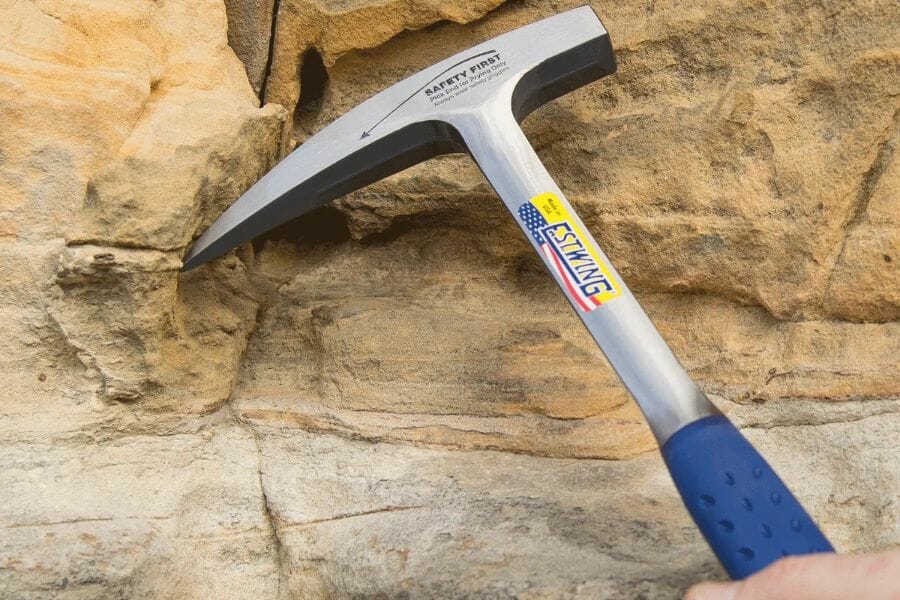
The tools every crystal hunter will need
When you're out looking for crystals having the right tools for the job is very important. You don't need a lot for most trips but there are a handful that are critical and will make your life a lot easier.
We get asked a lot about the equipment we use. Over the years we've found a handful of tools that we recommend to both new and experienced crystal miners which we outline in great detail in our complete rockhounding equipment guide. These are quality options that also happen to be relatively inexpensive.
Below are the basic tools that make your life so much easier and save you a ton of time. Check out the full guide to see everything we recommend bringing. One quick note, as an Amazon Associate I earn from qualifying purchases but we try very hard to only recommend gear we would use ourselves and often recommend brands you can't find on Amazon.
At a minimum you should have:
1 - Sturdy rock hammer: The Estwing Rock Pick is our standard
2 - Rugged chisels: Try Kendo' 3-piece Chisel Set
3 - Compact shovel: The Koleiya 28-inch shovel works well
4 - Rock screen pan: The Wazakura Soil Sieve Set fits the bill
5 - Eye protection: DeWalt Safety Glasses are cheap and comfortable
6 - Head protection: Malta's Safety Helmet has been our go-to
7 - Jewelers lens with at least 20x magnification: Jarlink's Jewelers Loop is perfect
The crystal-finding books that we use most
There are also a few books that have been extremely helpful in the search for gems. These books have great recommendations and tips:
National Audubon Society Field Guide to Rocks and Minerals: North America
Southeast Treasure Hunter's Gem & Mineral Guide
Earth Treasures: The Southeastern Quadrant
We provide links to find these tools on Amazon but some can also be found at your local hardware stores. For more recommendations check out the link to our full tool guide above.
The Mining Laws And Regulations You Should Know
In Idaho, recreational rockhounding is generally permitted on public lands managed by the Idaho Bureau of Land Management (BLM)). However, certain restrictions may apply. It’s crucial to check with the local BLM office for specific rules and regulations regarding collecting crystals and minerals in a particular area.
On public lands, casual collectors can gather reasonable amounts of crystals and minerals for personal use without a permit. However, commercial collecting and the use of mechanized equipment may be prohibited or require a permit.
Always seek permission from the landowner before collecting crystals on private property. Trespassing and unauthorized collection are illegal and can result in penalties.
- The extensive local experience and understanding of our team
- Input from multiple local crystal hunters and crystal collecting groups
- The accessibility of the crystal mining locations
- Safety and potential hazards when collecting
- Private and public locations
- A desire to include locations for both experienced crystal hunters and those who are just starting out
Using these weights we think we’ve put together the best list out there for those who love finding new crystals for our collections!
The Best Locations For Crystal Mining in Idaho
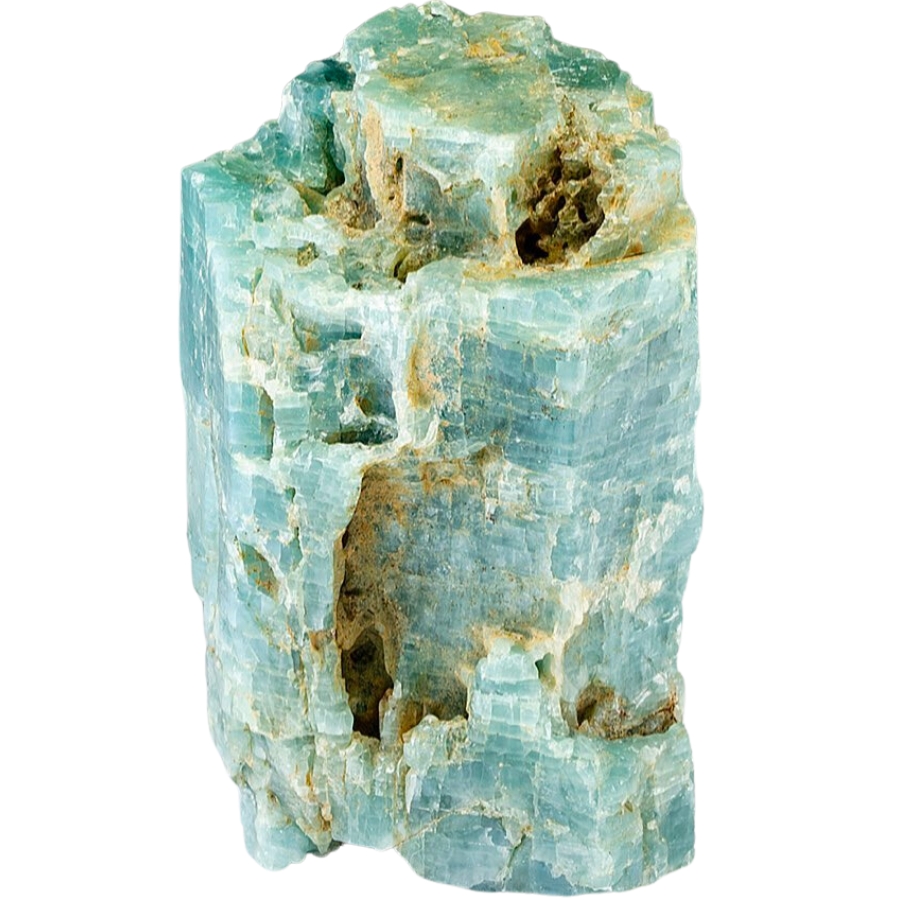
Here are a few of Idaho’s best places for crystal hunting. We’ve found some of the most amazing crystals by exploring them, and we have great faith that you will, too.
Always Confirm Access and Collection Rules!
Before heading out to any of the locations on our list you need to confirm access requirements and collection rules for both public and private locations directly with the location. We haven’t personally verified every location and the access requirements and collection rules often change without notice.
Many of the locations we mention will not allow collecting but are still great places for those who love to find beautiful rocks and minerals in the wild without keeping them. We also can’t guarantee you will find anything in these locations since they are constantly changing.
Always get updated information directly from the source ahead of time to ensure responsible rockhounding. If you want even more current options it’s always a good idea to contact local rock and mineral clubs and groups
Little Wood River
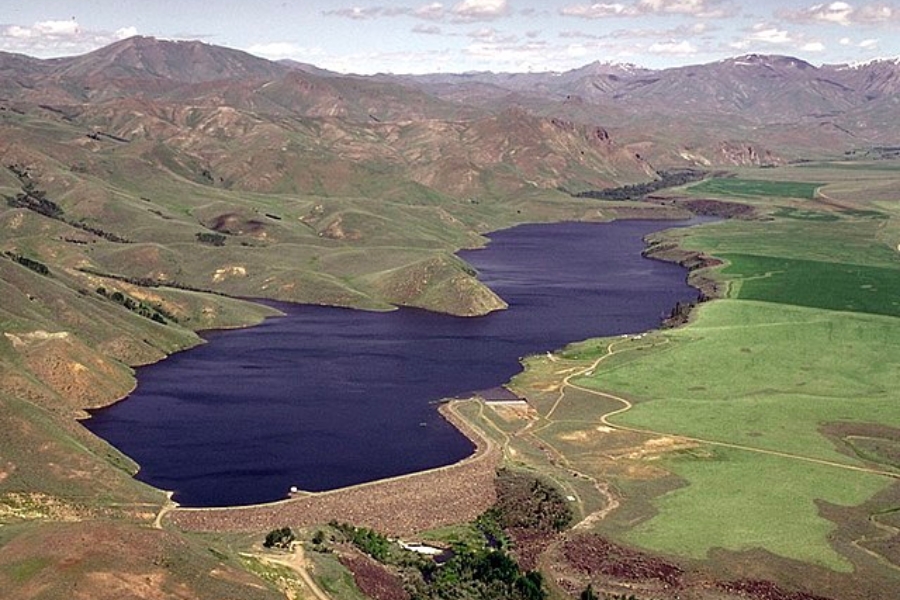
Blaine County, ID
Historically, the Little Wood River wasn’t known for its mining like other parts of our state. Instead, it was cherished for its agricultural and natural beauty. But for those in the know, it’s always been a secret spot for finding pretty unique crystals.
The area around Little Wood River is quite diverse. You’ll find a mix of volcanic rocks and sedimentary layers here. Over time, the river has eroded layers of rock, exposing quartz veins and other mineral deposits.
Getting to this river is pretty straightforward. It’s located in the south-central part of our state, not too far from the town of Shoshone. You can take the US Highway 20 to reach the area. From there, smaller roads and trails lead you closer to the river.
Where we found crystals at the Little Wood River
You can search for crystals in the gravels of Little Wood River. Specifically, you can find agate, chalcedony, and jasper here.
Gold Hill Mine
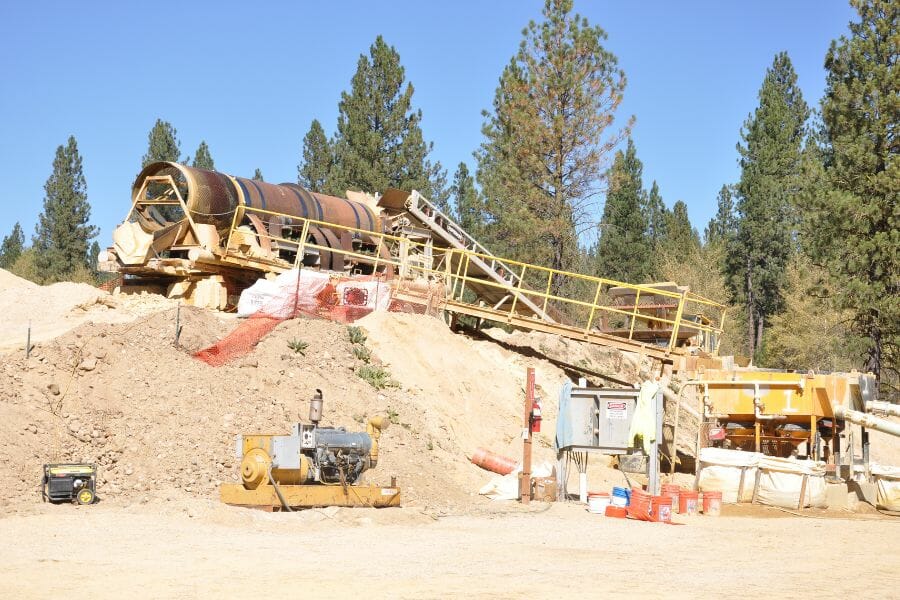
Boise County, ID
One of the reasons Gold Hill Mine is a must-visit for crystal hunters is its impressive array of minerals. Its unique geological setting has given rise to various crystals. If you’re keeping tabs, you can include this place in your list of gem-hunting places in Idaho.
The story of Gold Hill Mine began in the 1860s when prospectors, lured by the promise of gold, flocked to the region in search of fortune. Over the years, the mine expanded its scope, shifting its focus from gold to other valuable minerals, including lead, silver, and zinc.
Today, the mine’s rich geological legacy continues to captivate visitors who are looking for its crystals.
Where we found crystals at Gold Hill Mine
In the mine dumps and placer trailing of Gold Hill Mine, we have collected various crystals, including garnet and quartz.

The tools every crystal hunter will need
When you're out looking for crystals having the right tools for the job is very important. You don't need a lot for most trips but there are a handful that are critical and will make your life a lot easier.
We get asked a lot about the equipment we use. Over the years we've found a handful of tools that we recommend to both new and experienced crystal miners which we outline in great detail in our complete rockhounding supplies guide. These are quality options that also happen to be relatively inexpensive.
Below are the basic tools that make your life so much easier and save you a ton of time. Check out the full guide to see everything we recommend bringing. One quick note, as an Amazon Associate I earn from qualifying purchases but we try very hard to only recommend gear we would use ourselves and often recommend brands you can't find on Amazon.
At a minimum you should have:
1 - Sturdy rock hammer: The Estwing Rock Pick is our standard
2 - Rugged chisels: Try Kendo' 3-piece Chisel Set
3 - Compact shovel: The Koleiya 28-inch shovel works well
4 - Rock screen pan: The Wazakura Soil Sieve Set fits the bill
5 - Eye protection: DeWalt Safety Glasses are cheap and comfortable
6 - Head protection: Malta's Safety Helmet has been our go-to
7 - Jewelers lens with at least 20x magnification: Jarlink's Jewelers Loop is perfect
The crystal-finding books that we use most
There are also a few books that have been extremely helpful in the search for gems. These books have great recommendations and tips:
National Audubon Society Field Guide to Rocks and Minerals: North America
Northwest Treasure Hunter's Gem & Mineral Guide
Earth Treasures: The Northwestern Quadrant
We provide links to find these tools on Amazon but some can also be found at your local hardware stores. For more recommendations check out the link to our full tool guide above.
Ima Mine
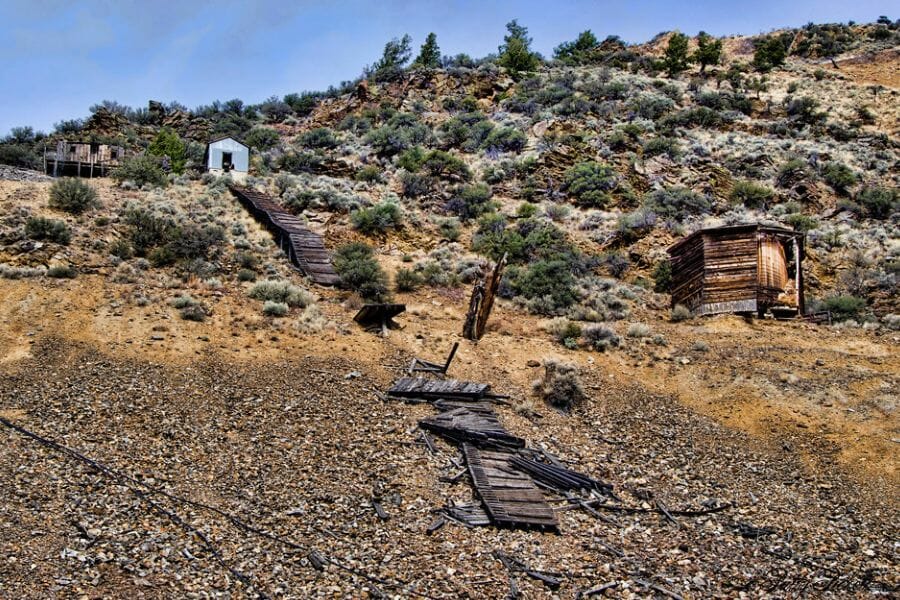
Lemhi County, ID
Ima Mine is a former mining site that serves as a gateway into our state’s mining heritage while presenting the chance to find crystals.
Ima Mine’s history can be traced back to the early 20th century when miners, enticed by valuable minerals, began extracting tungsten, gold, and silver from the site.
Over the years, the mine has seen the rise and fall of mining activities, leaving an enchanting legacy that continues to enthrall modern-day crystal hunters.
Where we found crystals at Ima Mine
The area at Ima Mine is a good place to look for chalcopyrite and galena crystals. You can determine how much is crystal worth through this article we’ve made.
Mica Queen Mine
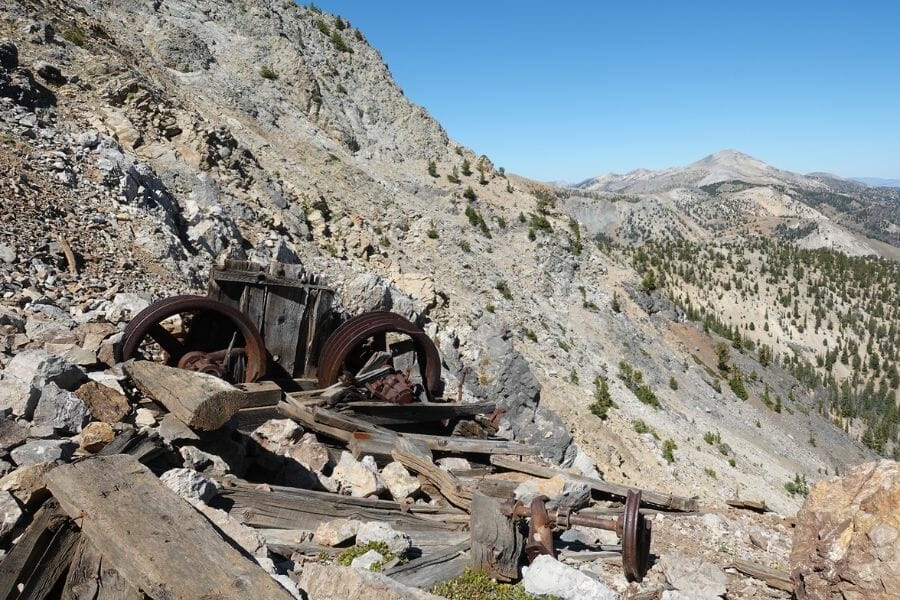
Adams County, ID
Mica Quee Mine was once a bustling hub for mica mining, dating back to the early 1900s. It was named for the abundance of mica found there, a mineral once highly sought after for its unique properties in electrical insulation and more.
Over the years, though, as the demand for mica waned, the mine was left to the hands of time and nature, transforming it into a rockhound’s paradise. It’s characterized by a blend of granite and pegmatite formations. These are known for hosting a variety of minerals, including quartz, feldspar, and of course, mica
The pegmatites, though, are the real stars here, as they’re often associated with large crystal formations and rare minerals.
Where we found crystals at Mica Queen Mine
We mostly found muscovite crystals all through the area of Mica Queen Mine.
Rock Flat
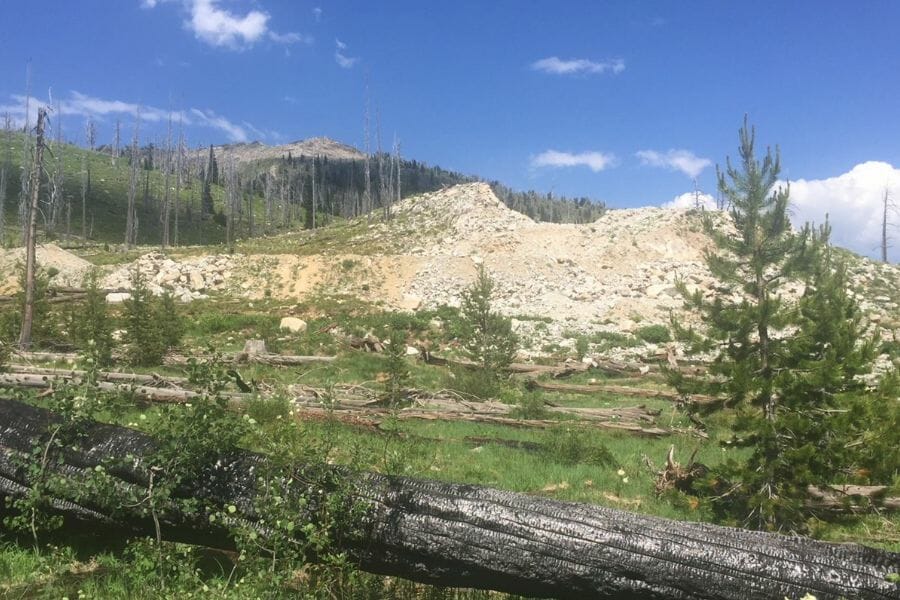
Adams County, ID
While the history of Rock Flat may not be as intimately tied to mining as some other locations in our state, its geological features have long attracted rockhounds and mineral collectors.
This place is a top destination if you’re looking to expand your knowledge of crystals because it has an astounding range of crystals.
It’s abundant with quartz crystals, some beautifully clear and others tinged with various colors due to mineral impurities. You might also stumble upon jasper, agate, or even the occasional opal.
Where we found crystals at the Rock Flats
Many diamond, garnet, rhodonite, ruby, sapphire, and topaz crystals can be located on the gravels of the Rock Flats.
Sunshine Mine
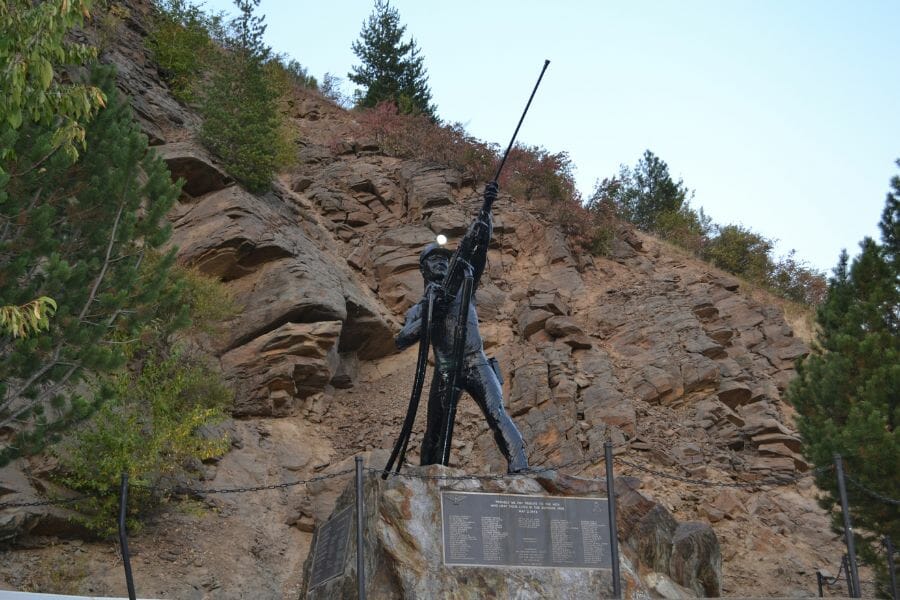
Shoshone County, ID
Originally established in the early 1900s, the Sunshine Mine was a powerhouse for silver production. Over the years, it became one of the most prolific silver mines in the country.
Situated in the heart of the Coeur d’Alene Mining District, this area is renowned for its geological structure, primarily consisting of Precambrian rocks and various mineral deposits. This is a result of ancient hydrothermal systems, which means it’s not just rich in silver but also in a variety of crystals.
Sunshine Mine is located near the town of Kellogg. You can reach it by taking Interstate 90 and exiting towards Big Creek Rd. The mine itself is not open to the public for underground tours, but its surrounding areas are.
Where we found crystals at Sunshine Mine
We had the best luck finding garnet and kyanite crystals at the Sunshine Mine.
My Other Favorite Places For Crystal Hunting
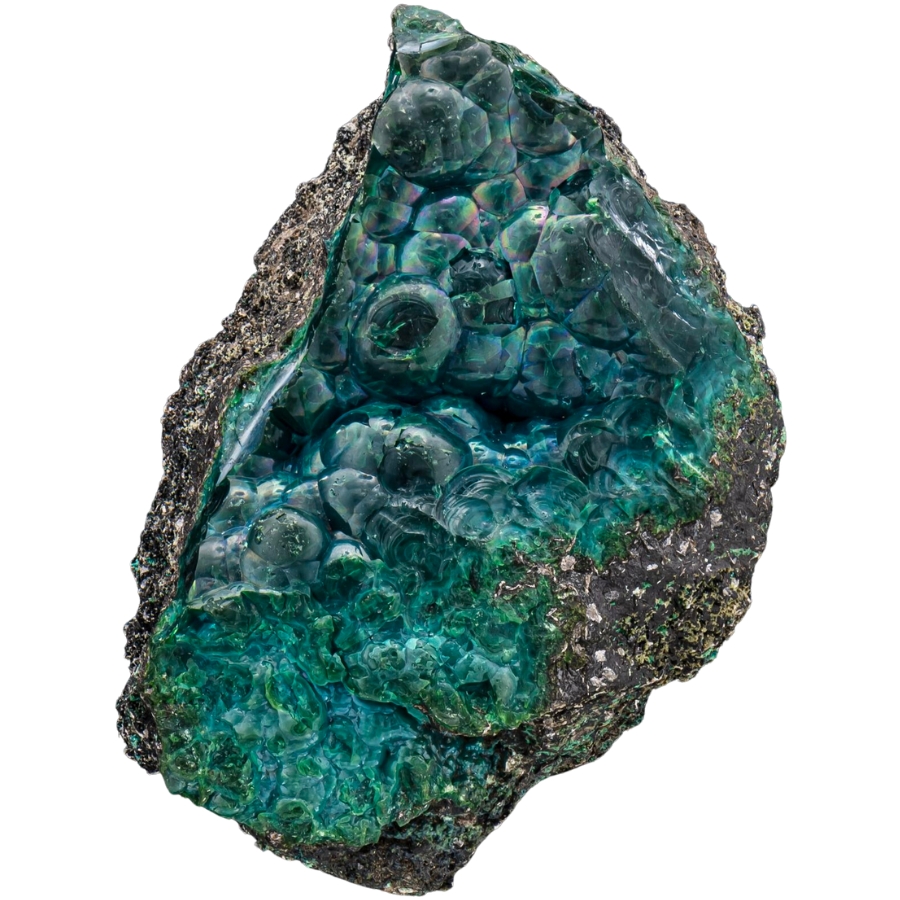
Besides our top recommended places, you can also search for crystals in other equally breathtaking spots. If you’re lucky, you might also find geodes in these areas:
Where you can find crystals for free
Below are some locations where you can find crystals without spending money on fees:
| County | Location |
| Adams | At the Seven Devils in limestones in contact zones where copper is mined and along the gravels of Little Goose Creek Canyon for epidote and diamond |
| Benewah | At Emerald Creek and its East Fork, Ruby Gulch for garnet |
| Boise | At the pegmatite outcrops of Garden Valley for aquamarine |
| Butte | In the Lava Creek and Big Piney Mountain for agate and tourmaline |
| Butte | In the veins of Wildhorse Canyon on the east side of Hyndman Peak for quartz |
| Clearwater | Rhodes and Orofino Creeks for epidote and sapphire |
| Custer | At the area stream gravels of the Stanley Basin for sapphire |
| Fremont | Island Park Calder for agate |
| Gem | Squaw Butte, Horseshoe Bend, and up Black Canyon for agate and opal |
| Idaho | Little Salmon River, Salmon River sands and gravles for agate, chalcedony, garnet, and jasper |
| Idaho | Slate and McKinsey creeks for agate, chalcedony, and jasper |
| Jefferson | Camas Creek for opal and topaz |
| Latah | Emerald and Ruby Creeks for garnet |
| Latah | Boulder Creek for garnet |
| Lemhi | Parker Mountain for agate and chalcedony |
| Nez Perce | Clearwater River and all regional streams for agate, aquamarine, garnet, jasper, and quartz |
| Owyhee | Graveyard Point, Castle Creek, Indian Bathtub, and Long Gulch for agate, opal, and quartz |
| Owyhee | Bruneau Desert and Bruneau Canyon for agate, chalcedony, and jasper |
| Owyhee | Brace Brothers Ranch and Squaw Canyon for chalcedony, opal, and onyx |
| Shoshone | The divide between headwaters of St. Joe and Clearwater River for kyanite |
| Washington | Grouse and Hog Creeks, Peacock Claum, and Nutmeg Mountain for agate, chalcedony, garnet, opal, and pyrite |
Once you find your crystals, don’t let the confusion get the best of you when identifying them. Our user-friendly guides are here to assist you in differentiating between similar-looking crystals:
- Differences between Onyx and Obsidian
- Differences between Emerald and Jade
- Differences between Sapphire and Tanzanite
Other great places to dig for crystals
If you’re willing to spend money, there are more places you can look for crystals. The fees of these places change with the seasons, and occasionally they offer their entrances for free! You must contact them first before visiting to be sure.
| County | Location |
| Adams | Regional old mines and dumps for azurite and malachite |
| Bear Lake | The Hummingbird Mine for quartz |
| Custer | Copper mines and dumps for azurite, chalcopyrite, chrysocolla, malachite, and pyrite |
| Latah | Levi Anderson and Muscovite for beryl and muscovite |
| Owyhee | Black Jack and Trade Dollar mines for chalcopyrite |
The Best Crystal Shops In The Area
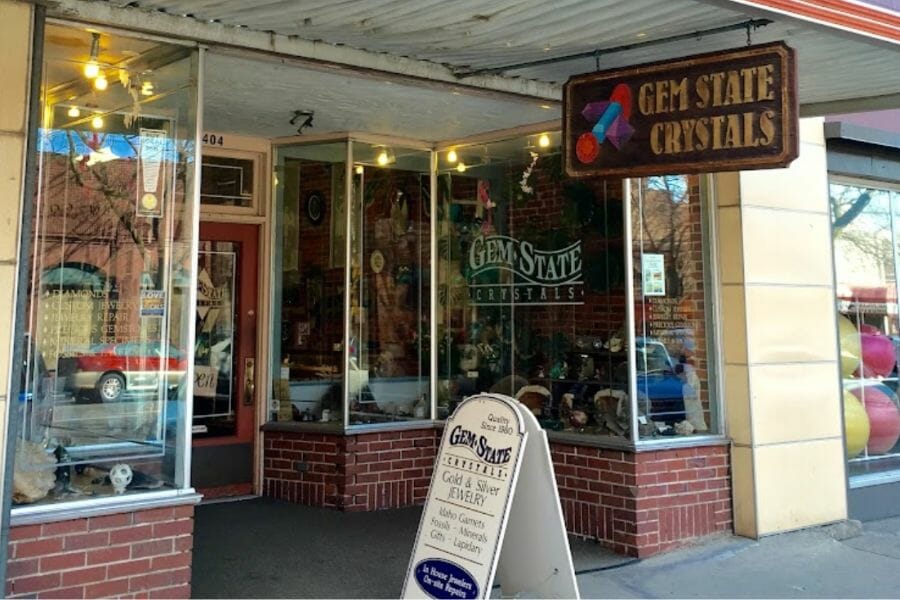
If you want to add small pieces to our collections without having to search for them in the wild, below are some of our favorite crystal stores:
- Astro Gallery of Gems Idaho – 3525 E Longwing Ln #190, Meridian, ID 83642
- Clarity Center – 6848 N Government Way #116, Coeur d’Alene, ID 83815
- Crystals Enlight – 132 Hansen St E, Twin Falls, ID 83301
- Earthlight Minerals & Gifts – 6437 W Fairview Ave, Boise, ID 83704
- Earth Brite Rock Shop – 3506 Cleveland Blvd, Caldwell, ID 83605
- Galaxy Gems and Jewelry – 510 2nd St, Idaho Falls, ID 83402
- Gem State Crystals Inc – 404 S Main St, Moscow, ID 83843
- Healing Hands Metaphysical Store – 429 B St, Idaho Falls, ID 83402
- Jenali’s Crystal Shop – 1108 Overland Ave #3, Burley, ID 83318
- Wild Gemstones – 350 N Milwaukee St, Boise, ID 83704
Additional places to find crystals in nearby states
If you’ve already tried all of our recommendations above or are planning a trip out of the state, you should check out our guides for neighboring states:
- Crystals in Montana
- Crystals in Nevada
- Crystals in Oregon
- Crystals in Utah
- Crystals in Washington
- Crystals in Wyoming
If you have any recommendations we haven’t covered please leave them in the comments below!

